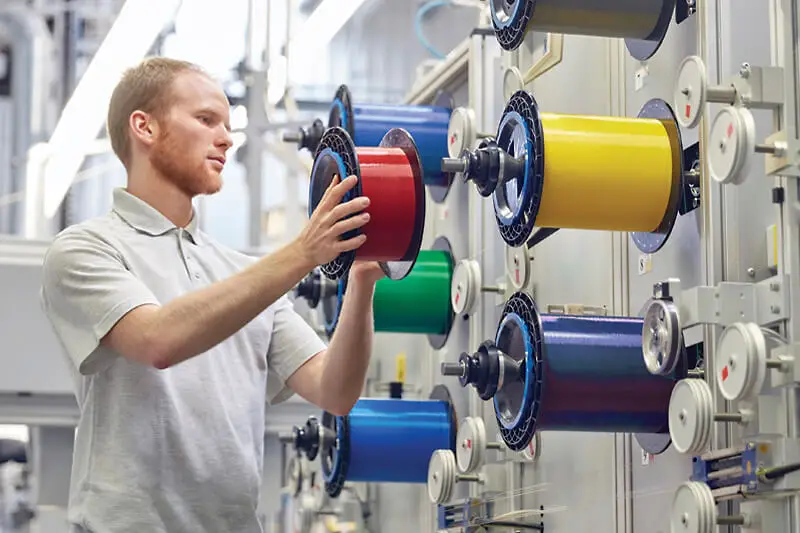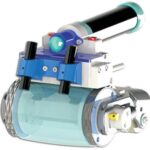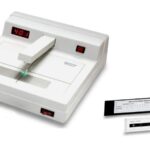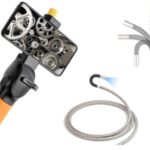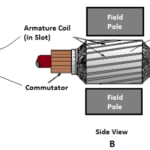Linear motion applications require a significant amount of energy to operate. Despite being one of the fastest-growing industries, with an annual growth of 7.5%, the concern regarding linear drives’ energy usage is rapidly increasing. Given the current picture of energy resources, industries are switching from hydraulic and electronic to mechanical structures for better accuracy, agility, and performance without consuming much energy. Rolling ring drives are gradually replacing electronic linear motion systems as a more reliable mechanical alternative.
What are Rolling Ring Linear Drive Systems?
Rolling ring linear drives are unique drives that function without friction. They change the workings of plain shafts to move and reciprocate linear motion-based applications. Rolling ring drives operate on smooth rods, wherein the motor-powered shaft’s rotary movement converts into linear output using specialized rolling ring bearings.
How do Rolling Ring Linear Drives Work?
During the initial stages, the inner part of rolling rings is modified to create a rim that circles the centermost part of the bearing’s internal structure. Once the ridge successfully covers the center, the rolling ring and the shaft meet on the rim’s apex. Irrespective of the bearing’s positioning or direction, it will remain intact.
Approximately three to four rolling bearings are attached and compressed inside the rolling ring drive. A threadless shaft enters the housing and moves around the bearing. The shaft then moves and compresses against the centered rim, resulting in the bearings rolling along the shaft. The motor-powered beam that generates the rotary input is converted into a linear drive.
What are the Advantages of Rolling Ring Linear Drives?
Using rolling ring linear drives with your applications has various benefits, such as different pitches, adjustable speed, low maintenance cost, and zero backlashes.
Fixed and Variable-Pitch Models
The pitch model is one of the most significant advantages of using rolling ring drives. You can purchase both fixed and variable-pitch versions depending on their properties. For instance, fixed pitch models are robust and reliable, whereas variable pitch versions are more aggressive. Fixed-pitch models function as threadless screws. Since they manage critical directions and PLC-powered operations, they are used in metrology devices. Their controls resemble standard screw-operated drive systems but without the attached threads.
On the other hand, variable-pitch models accurately adjust the pitch, including setting it to zero. Their precise settings remove the need for electronic operations and independently handle the motor’s travel direction and linear speed. A variable pitch version breaks down the complex layout of a linear system’s design and function. Given their simplicity and adjustability, variable pitch models come in handy in linear-motion tasks like cutting and winding.
Low Maintenance Costs
The only maintenance cost that rolling ring drives require is oiling and lubrication. Rolling ring drives are exceptionally durable and long-lasting, which saves you the time and cost of frequently replacing them. However, when they gradually begin to wear and tear over time with continued usage, they will need lubrication.
Other than lubricating, rolling ring drives bear no operating or repair costs. Furthermore, with a suitable rolling ring drive manufacturer, you will not have to worry about maintenance procedures, as they will deliver linear systems that last for ten to fifteen years.
Zero Backlash
Backlash refers to the rotating angle of a motor’s output shaft without moving the input shaft. Usually, backlash results from manufacturing issues, such as jammed gears. In many linear motion applications, backlash is an inherent problem. For instance, backlash in ball screws occurs due to the margin between the ball bearing and the screw’s threads. Alternatively, friction between gears, belts, and other systems can also cause backlash.
Manufacturers apply various methods to prevent backlash, such as strengthening the nut to keep the ball bearing sturdy under normal pressure and actively monitoring the device’s mechanisms. However, a backlash is not a concern with rolling ring drives. The drive’s properties maintain continuous contact between the bearing and the shaft. Moreover, rolling ring drives have protection against overload, which causes the nut to slip, not tighten during a system overload.
Controlled Speed and Direction
Since rolling ring drives enable precise adjustment of the ring bearings, users can control the linear speed and direction without needing prior motor speed or shaft rotation adjustments. The adjustable control of a user over the travel direction and speed gives a rolling ring drive a simplified design. Instead of using additional clutches, brakes, and control motors, rolling rings use an easy-to-navigate and low-maintenance setup. Their single-directional engine reduces operating charges and delivers a smooth and uninterrupted experience, regardless of direction, pitch, and production price fluctuations.
Rolling ring linear drives are excellent systems for your applications. They are available in fixed and variable pitch models, allowing you to choose the model compatible with your device. They also save you time and money, requiring lubrication maintenance only after ten to fifteen years.
